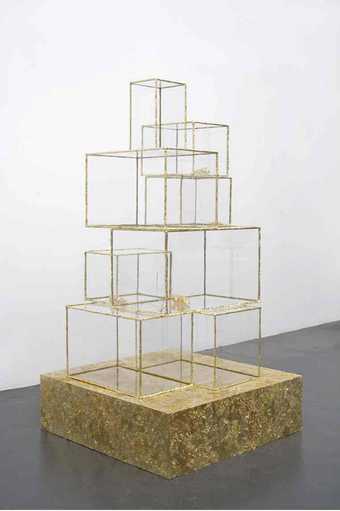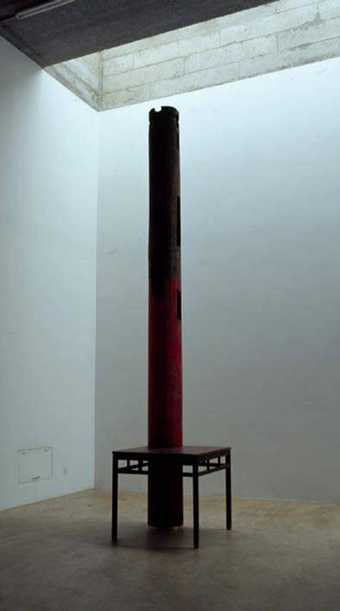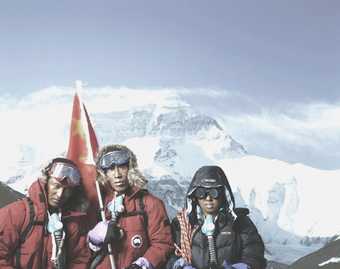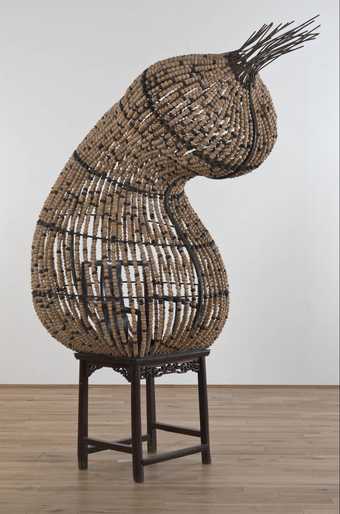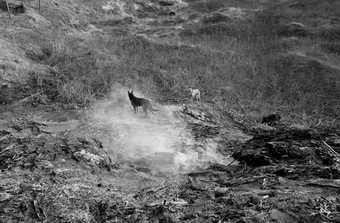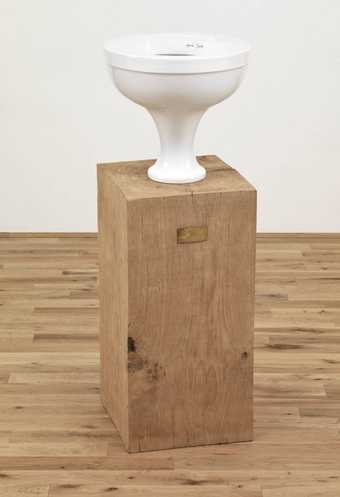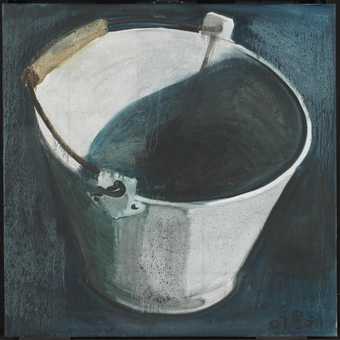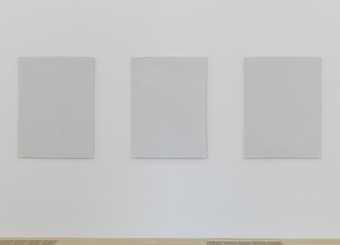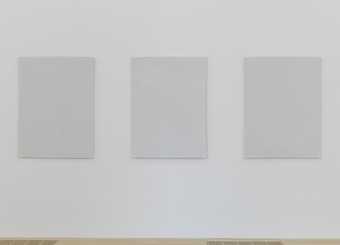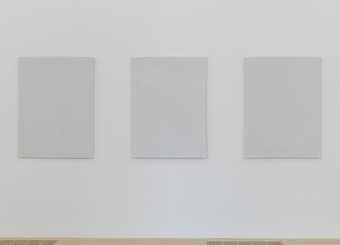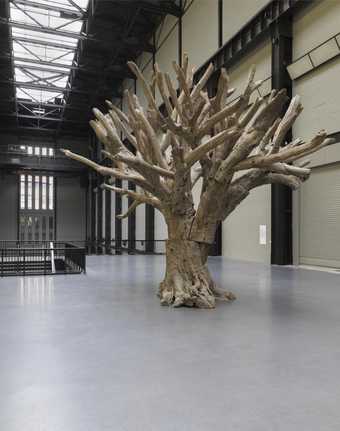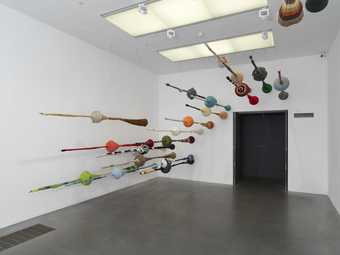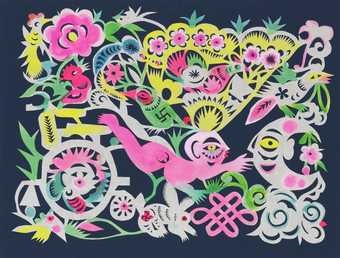Not on display
Summary
Sunflower Seeds 2010 consists of millions of individually handcrafted porcelain sunflower seeds. The work has a volume of nearly ten cubic metres, weighing approximately ten tonnes. The artist has stipulated two different configurations for the work. In the first, the seeds are arranged in a continuous rectangular or square field to a depth of ten centimetres. This ‘bed’ of seeds conforms to the dimensions of the display space, with walls confining the work on three sides. Alternatively, the work is presented as a conical sculptural form, approximately five metres in diameter. In this second configuration, there is no containing structure or support for the conical form, which is installed by carefully pouring the seeds from above to form the shape. Any uneven edges can be adjusted by hand at the time of installation.
This work is derived from the Eleventh Unilever Series commission for Tate Modern’s Turbine Hall for which Ai created 1-125,000,000 2010, a bed of ceramic sunflower seeds installed across the floor of the space. The Unilever Series commission was the first time Ai Weiwei presented this multitude of sunflower seeds as a continuous rectangular field to create a ‘unique surface’, and the first time he proposed an interactive element, in which the public was invited to walk on the seeds. In the event, after the initial days of the exhibition, it was not possible for viewers to interact with the work by walking on it due to the health risks posed by the resulting dust.
The fabrication of the seeds was carried out in the city of Jingdezhen in northern Jiangxi, a region of China south of Beijing. Historically famous for its kilns and for the production of imperial porcelain, this region is still known for its high quality porcelain production. The sunflower seeds were made by individual craftspeople in a ‘cottage-industry’ setting, rather than in a large-scale factory, using a special kind of stone from a particular mountain in Jingdezhen.
The symbol of the sunflower was ubiquitous during the Cultural Revolution in China in the 1960s and 1970s, and was often used as a visual metaphor for the country’s Communist leader Chairman Mao (1893–1976) and, more importantly perhaps, the whole population. In Sunflower Seeds Ai examines the complex exchanges between the one and the many, the individual and the masses, self and society. Far from being industrially produced, the sunflower seeds are intricately and individually handcrafted, prompting a closer look at the ‘Made in China’ phenomenon commonly associated with cheap mass-produced goods. The myriad sunflower seeds – each unique yet apparently the same – can be seen to evoke the quest for individuality in a rapidly transforming society.
In his proposal for the Unilever Series Commission, Ai commented on the significance of the sunflower seeds:
[In] the times I grew up, it was a common place symbol for The People, the sunflower faces the trajectory of the red sun, so must the masses feel towards their leadership. Handfuls were carried in pockets, to be consumed on all occasions both casual and formal. So much more than a snack, it was the minimal ingredient that constituted the most essential needs and desires. Their empty shells were the ephemeral traces of social activity. The least common denominator for human satisfaction. I wonder what would have happened without them?
(Ai Weiwei, unpublished proposal for Tate Modern Unilever Series, March 2010.)
Ai’s practice is increasingly driven by issues facing contemporary China, such as the exercise of autocratic power, the disappearance of Chinese cultural and material history, and concerns about human rights, hard labour and poverty. Sunflower Seeds explores the complexity of the Chinese individual’s relationship with society, the authorities and tradition.
Further reading
Charles Merewether (ed.), Ai Weiwei Works: Beijing 1993–2003, Beijing 2003.
Karen Smith, Hans Ulrich Obrist, Bernard Fibicher, Ai Weiwei, London 2009.
Ai Weiwei, According to What?, exhibition catalogue, Mori Art Museum, Tokyo 2009.
Juliet Bingham
June 2010
Does this text contain inaccurate information or language that you feel we should improve or change? We would like to hear from you.
Explore
- abstraction(8,615)
-
- from recognisable sources(3,634)
-
- landscape(1,191)
- formal qualities(12,454)
-
- fragility(50)
- repetition(391)
- visual illusion(118)
- countries and continents(17,390)
-
- China(38)
- lifestyle and culture(10,247)
-
- cultural identity(7,943)
- commerce(93)
- consumerism(102)
- contemporary society(640)
- ecology(61)
- globalization(28)
- industrial society(425)
You might like
-
Terence Koh Untitled (A New World Order Lies in this Golden Age)
2006 -
Rosemarie Trockel [no title]
1991 -
Ai Weiwei Table and Pillar
2002 -
Xu Zhen 8848 - 1.86
2005 -
Chen Zhen Cocon du Vide
2000 -
Yang Fudong East of Que Village
2007 -
Gavin Turk Font
2006 -
Zhang Enli Bucket 5
2007 -
Liu Jianhua Blank Paper
2012 -
Liu Jianhua Blank Paper
2012 -
Liu Jianhua Blank Paper
2012 -
Ai Weiwei Tree
2010 -
Yin Xiuzhen Weapon
2003–7 -
Zhang Xiaogang New Year’s Eve
1990 -
Xiyadie Flying
2000


